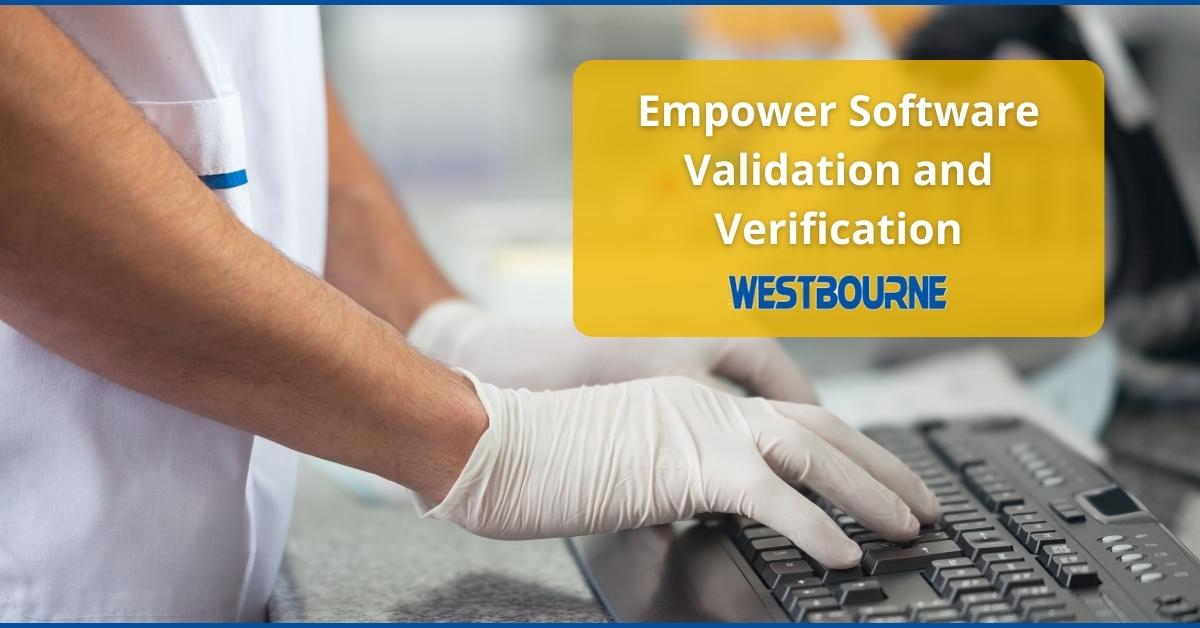What You Need to Know About Empower Software Validation and Verification

The validation and verification of software in lab environments can be a challenging task. In fact, in some cases, the necessity for validation and verification can delay the implementation of much-needed laboratory software. This includes software like Empower CDS.
However, with the right support and knowledge, Empower software validation and verification can be completed efficiently, ensuring your lab remains in compliance with European regulators and the FDA. You can then fully benefit from the powerful tools and features available in the Empower CDS platform.
Risk-Based Approach to Lab Software Validation
Empower CDS has already been qualified by the vendor. It is also a widely used software application in the life sciences sector. As a result, the validation and verification process that you go through for your Empower installation shouldn’t involve recreating documentation or tests that already exist. Instead, you can take a risk-based approach to validation and verification.
This means you can use the Empower SystemsQT qualification tool, which is 21 CFR Part 11 compliant. This allows you to document the installation qualification (IQ) and operational qualification (OQ) of your Empower implementation. This Empower qualification tool saves time and allows you to quickly verify the software has been installed properly, as well as other aspects essential to IQ and OQ.
You can then focus your efforts on validating the specific configuration of Empower CDS in your lab in relation to workflows, work processes, user requirements, and functional requirements.
As part of the validation process, elements of your Empower implementation that are deemed to be high-risk should go through a risk mitigation process, with everything fully documented along the way. This could include testing the installation and/or configuration of the Empower software, and/or through the creation of Standard Operating Procedures (SOPs).
Testing Based on How Empower Will Be Used in Your Lab
The tests that are done during an Empower implementation should be based entirely on how your quality team will use the software application. Therefore, there is no standard collection or format of tests that should be conducted.
For example, at Westbourne, our testing regime would be different if a lab is using Empower as a standalone application compared to using it in groups. User privilege challenge testing is a common type of test in Empower validation and verification projects, but it would differ depending on whether Empower is used standalone or in groups.
As a result, it is essential to structure operational qualification (OQ) and other testing processes based on how your lab will use Empower. When working with a third party to facilitate your Empower implementation, it’s important the provider not only has expertise in Empower, but also in lab workflows and processes to ensure testing is fully tailored.
Empower CDS Verification and Validation Requirements
- Planning and creating a verification and validation strategy
- Defining process and user requirements specific to your lab
- Creating requirements specification documentation
- Identification of high-risk areas and processes. These are areas and processes deemed to directly impact product quality or human safety. Scripted testing will be required in these situations, so test scripts will need to be created and executed. Defects will then need managed and report documentation produced.
- Identification of medium-risk areas and processes, i.e., areas and processes that indirectly impact product quality or human safety. According to the FDA’s computer software assurance (CSA) guidelines, unscripted testing is suitable in these situations.
- As part of CSA, ad-hoc testing is suitable for low-risk areas of your Empower CDS implementation
- Creation of SOPs
- Ensuring full documentation of the verification and validation process
Empower Custom Fields and Changes to Empower CDS
It is important to note that, in addition to validating your Empower CDS installation, you will also need to validate each individual Custom Field. This is to ensure you can provide evidence to regulators during an audit that each Custom Field is correct according to the test method requirements.
As with test method validation, any changes that are made to your Empower implementation will mean you will need to go through a revalidation exercise to ensure ongoing compliance and audit readiness.
Ongoing Validation and Verification
Continuous improvement is an essential part of optimizing Empower in your lab. With continuous improvement comes ongoing validation and verification.
We’ll explore ongoing improvement in an upcoming blog, including the benefits as well as our approach at Westbourne, where improvements of your Empower implementation are proactive, driven by the expertise and in-depth knowledge of our team.
Empower Software Validation and Verification Support
As mentioned above, there are tools available in the Empower CDS application that help with part of the software verification and validation process. The FDA’s move towards a risk-based approach to software validation (i.e., replacing CSV with CSA), has also made the validation process more efficient.
There are still a number of steps involved and potential pitfalls. None of these challenges should delay either your implementation of Empower CDS or the validation process. This is because help is available from our Empower validation specialists at Westbourne. Get in touch today to find out more.
Latest Insights
A New (Science-Led) Approach to IT and Technical Support for the Pharmaceutical Industry
Digital transformation concepts and new technologies are changing the pharmaceutical industry, from individual processes in labs and on production lines to the way businesses operate. With technologies being at the center of these transformational changes, it is...
Westbourne is Now an Approved ValGenesis Partner
We are delighted to announce that we are now a ValGenesis partner. ValGenesis is the developer of a suite of digital...
Risk-Based Approach to Reviewing Data and Audit Trails in Empower 3
Audit trail data is essential for compliance, and it has operational benefits. Regulators, including the FDA and...
Continuous Oversight: a Key Principle for Implementing AI in Pharmaceutical Manufacturing and Quality Control
Artificial Intelligence (AI) is one of the hottest topics in business right now as executives try to take advantage of...
Empower 3 Audit Trails and Logs Explained
In the context of the computerized systems used in GxP environments, audit trails are a chronological record that...

